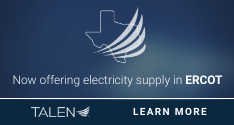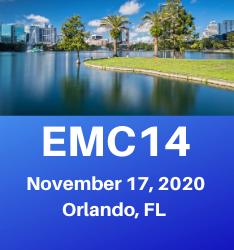|
|
|
|
|
Residential Customers On Competitive Supply At ComEd Paid $144 Million More Than Default Service Over Last Twelve Months, Annual ORMD Report Says
The following story is brought free of charge to readers by EC Infosystems, the exclusive EDI provider of EnergyChoiceMatters.com
The Illinois Commerce Commission's Office of Retail Market Development has published its annual retail market report, which includes a comparison of costs paid by customers served by an alternative retail electric suppliers (ARES), including through municipal aggregation, versus the costs that would have been paid under default service
In aggregate, from June 2019 to May 2020, residential customers served by an ARES at Commonwealth Edison paid $136 million more than the ComEd Price to Compare, and $144 million more than the ComEd default service cost when including the impact of the bypassable Purchased Electricity Adjustment (PEA)
On an average monthly basis, all residential ARES customers in the ComEd territory combined paid around $11.4 million
more per month during the last twelve months when compared to the ComEd Price-to-Compare (PTC),
and $12.04 million more per month during the last twelve months when compared to the ComEd PTC
plus the Purchased Electricity Adjustment (PEA).
In no month during the June 2019 to May 2020 period were the aggregate costs to residential customers served by an ARES at Commonwealth Edison lower than the PTC cost, nor lower than the cost of the PTC plus PEA.
In terms of cents per kWh, residential ARES customers
in the ComEd territory paid about 1.694 cents/kWh more when compared to the ComEd PTC only, and on
average 1.79 cents/kWh more when including the PEA, for the period June 2019 to May 2020
At Ameren, from June 2019 to May 2020, residential customers served by an ARES paid in aggregate $97 million more than the Ameren Price to Compare, and $107 million more than the Ameren default service cost when including the impact of the bypassable Purchased Electricity Adjustment (PEA).
On an average monthly basis, the aggregate cost to all residential ARES customers was $8.14 million more per month than the Ameren PTC, and $8.95 million more per month than the PTC plus PEA
In terms of cents per kWh, residential ARES customers in the Ameren Illinois territory paid, on average,
1.513 cents/kWh more when compared to the Ameren Illinois PTC only, and about 1.664 cents/kWh
more when including the PEA.
The cost comparisons listed above include the impact of customers served by an ARES through opt-out municipal aggregation
In making the cost comparisons, the report noted the following caveats
• These are total, or aggregate, savings and the savings for almost all individual customers differ
from these averages;
• These calculations are ex-post calculations and do not take into account how the ComEd default
rates would have been different had more or fewer customers stayed on the utility’s default
supply service;
• Most of the ARES with residential customers have at least one offer that features a renewable
energy component greater than what is required under the Illinois Renewable Portfolio
Standard. The average rate information collected from the ARES include the (usually higher)
prices associated with these offers; and
• Not captured in these numbers are rewards and incentives that are not part of the ARES electric
supply rates. For example, several ARES offer one-time gift cards to prospective customers as an
incentive to sign up for a particular offering. Other offerings contain rewards such as airline
miles and other non-rate benefits. However, these non-rate benefits are difficult to quantify and
would require Staff to make several more assumptions as well as request additional detailed
data from the ARES.
Statewide, there are currently 1.67 million residential customers on ARES supply, compared to 1.78 million last year.
As of May 2020, total residential customers served by an ARES at ComEd were 1.065 million, about 29% of customers
As of May 2020, total residential customers served by an ARES at Ameren were 609,000. By Ameren rate zone, the residential migration rate (including aggregation customers) varied between 50% and 68%.
Statewide, the share of residential municipal aggregation customers increased from 52% of all residential ARES customers in May 2019 to 61% as of May 2020.
As of June 2020, 554 active
municipal aggregation programs existed between the ComEd and Ameren territories, which is an increase of 6%
from 2019.
In the ComEd area, 57% of residential ARES customers are government aggregation customers. This is an increase of 35% (15 percentage points) versus the 42% from a year ago
The average rate for a municipal aggregation program in the ComEd territory is currently
6.759 cents per kWh. This average rate is above the current ComEd Price to Compare (6.473 cents), not including the impact of the PEA. When taking into account the PEA, the current average municipal aggregation rate is anywhere from 2 mills lower to 1 mill higher than the ComEd total default service rate, in recent months
Of the 609,425 residential ARES customers in the Ameren Illinois service territory, 68% are government aggregation customers. This represents a decrease compared to
the 70% aggregation share from a year earlier.
In the Ameren territory, the current average rate for a municipal aggregation program is 5.439 cents per kWh.
In terms of retail supplier market share, the report said that the ComEd residential market remains unconcentrated for the fifth consecutive year.
At ComEd, the combined market share of the largest three retail suppliers is 41%, versus 42% a year ago.
At ComEd, only 1 supplier had a residential market share above 15%. Three suppliers had a market share between 5% and 15%. 48 of the 55 ARES with residential customers had a market share of less than 5%, and 29 of the ARES with residential customers had a market share of less than 1%
The report noted that all three Ameren Illinois rate zones (RZs) have "very high market concentrations" in terms of retail supplier market share, based on Herfindahl-Hirschman Index values (all RZs have values above 3,000), and said that Ameren Illinois RZ II
continues to be the most concentrated residential market by a wide margin.
"The fact that 70% of the
residential ARES market in Ameren Illinois’ rate zones consists of aggregation customers, and the vast
majority of the aggregation programs are with the same supplier help explain this phenomenon," the report said
ADVERTISEMENT Copyright 2010-20 Energy Choice Matters. If you wish to share this story, please
email or post the website link; unauthorized copying, retransmission, or republication
prohibited.
Customers On Retail Supply Paying On Average 1.7¢/kWh More Than ComEd
Share Of Competitive Supply Residential Customers Served By Municipal Aggregations Grows 35% At ComEd, Nears 60%
July 31, 2020
Email This Story
Copyright 2010-20 EnergyChoiceMatters.com
Reporting by Paul Ring • ring@energychoicematters.com
NEW Jobs on RetailEnergyJobs.com:
• NEW! -- Energy Systems Analyst -- Retail Supplier
• NEW! --
Billing Specialist -- Retail Supplier
-- Texas
• NEW! --
Director - Distributed Generation, Demand Response, & Market Participation -- Houston
• NEW! --
Retail Energy Account Executive -- Houston
• NEW! --
Business Development Manager
|
|
|
|









